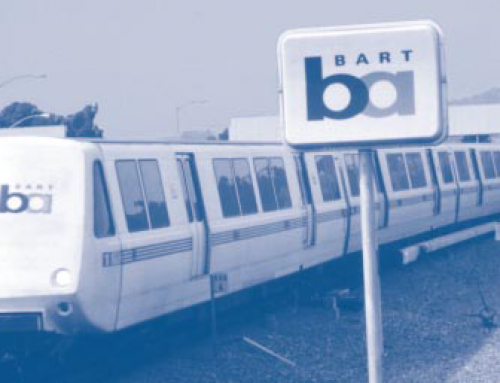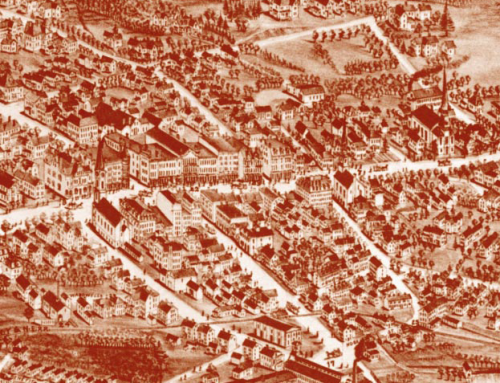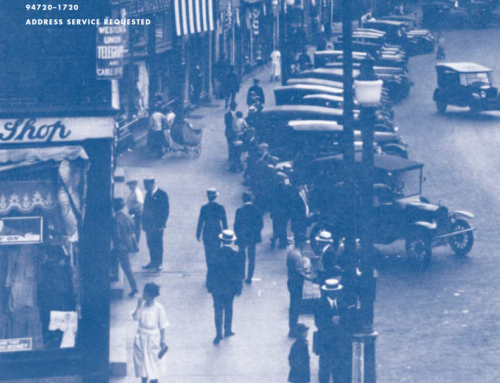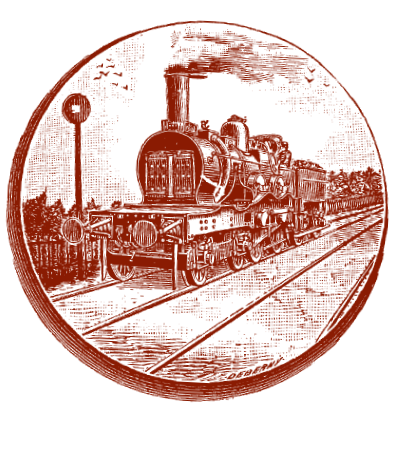 Most railroad companies around the world own and maintain all the necessary facilities and equipment to provide rail transportation service. Different railroads often serve different regions, so a long distance movement might involve the cooperation of two or more railroads. A freight container moving from the port of Los Angeles to Atlanta might be transferred from the Union Pacific Railroad to the CSX Railroad, for example, while a passenger coach from Paris to Frankfurt would be transferred from the French to the German national railways at the border. But within its respective service area, each railroad usually owns all or most of the needed locomotives, wagons, tracks, yards, and stations. In the parlance of economists, railroads are often horizontally separated in that different railroads serve different regions, but they are almost always vertically integrated in the sense that they provide all the functions needed to offer rail service within their region.
Most railroad companies around the world own and maintain all the necessary facilities and equipment to provide rail transportation service. Different railroads often serve different regions, so a long distance movement might involve the cooperation of two or more railroads. A freight container moving from the port of Los Angeles to Atlanta might be transferred from the Union Pacific Railroad to the CSX Railroad, for example, while a passenger coach from Paris to Frankfurt would be transferred from the French to the German national railways at the border. But within its respective service area, each railroad usually owns all or most of the needed locomotives, wagons, tracks, yards, and stations. In the parlance of economists, railroads are often horizontally separated in that different railroads serve different regions, but they are almost always vertically integrated in the sense that they provide all the functions needed to offer rail service within their region.
In the mid-1990s, the British government began a radical experiment in vertically restructuring rail services when it privatized its national railroad, British Rail. The government broke British Rail into approximately seventy different companies and sold them to the private sector. The most important of these is Railtrack, which owns and maintains all of the tracks, yards, stations, and other railroad infrastructure in the country. Twenty-five separate private passenger train-operating companies, nicknamed TOCs, pay Railtrack to use its facilities. In addition, there are separate companies that operate freight trains and lease locomotives and rolling stock to the TOCs. They also bid to maintain infrastructure for Railtrack as well as locomotives and rolling stock for the TOCs.
The aim of British Rail’s vertical separation was to improve service and reduce costs by introducing more competition into train services. Rail infrastructure is usually considered a natural monopoly because the most economical way to serve most rail corridors is with a single set of tracks and stations. But train operations alone (without responsibility for infrastructure) is not a natural monopoly, so there would be no cost penalty if several TOCs competed with one another in the same corridor.
Vertical separation has long been common in other forms of transport, and it is increasingly popular in many other types of infrastructure and in utilities. The firms or agencies that own and maintain most highways, airports, and seaports, for examples, are not the same as those operating the vehicles, planes, and ships that use those facilities. Recently many countries have vertically restructured their telephone, electric, and gas utilities to introduce competition to certain parts of the business. In the mid-1980s, for example, the United States divided its national private telephone company, AT&T, into a long-distance company, an equipment company, and twelve separate local telephone companies (the “Baby Bells”).
The aim of British Rail’s vertical separation was to improve service and reduce costs by introducing more competition into train services.
The reforms to British Rail remain the most ambitious attempt to apply vertical restructuring to railroads. The most important prior example in the United States involves Amtrak, the public corporation created in 1970 to revive long-distance rail passenger services. Amtrak owns its own rights-of-way only in the Washington-New York-Boston corridor; elsewhere it must pay private freight railways to operate passenger trains over their tracks. The private railroads agreed to this arrangement in 1970 in return for being released from the obligation to offer their own passenger services, but the number of Amtrak trains involved is relatively small.
In the 1980s, Sweden divided its government-owned railway into separate infrastructure and train-operating companies. The idea was that private train-operating companies would then be able to provide service using government-owned infrastructure, but the private sector showed little interest in entering the railroad business on these terms. Other countries that have recently privatized their railroads—such as Japan, Argentina, and Mexico— have broken them up horizontally (into regional railroads) rather than vertically.
Interest in Britain’s experiment is intense because the entire European Union may soon follow suit. The European Commission wants to promote competition in EU railway services and has issued directives requiring railways of member countries to offer access to other carriers on equitable terms. At the very least, the directives require railways to separate their infrastructure costs from their train-operation costs and to determine fair rules and charges for track access. Some countries, such as Germany, are establishing separate infrastructure and train-operating companies that they may eventually privatize.
The Origins and Design of Britain’s Railway Reforms
British Rail was created in 1948 when Britain’s private railroads were nationalized. It provided four main types of services throughout the nation: freight; regional (medium distance) passenger trains; intercity (long distance) passenger trains; and commuter railroad services, particularly in and around metropolitan London. British Rail’s market share declined rapidly from the start, especially on the freight, regional, and intercity services, which faced serious competition from trucks, buses, and private automobiles. Commuter railroad ridership declined less drastically, largely because London’s traffic congestion made auto and bus alternatives less attractive. 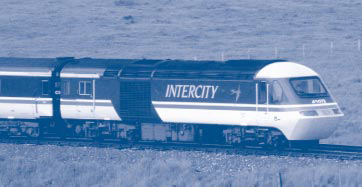 Although the government cut many unprofitable and lightly used tributary lines in the 1960s and modernized track and rolling stock on many remaining lines during the 1970s, British Rail continued to require substantial public subsidies.
Although the government cut many unprofitable and lightly used tributary lines in the 1960s and modernized track and rolling stock on many remaining lines during the 1970s, British Rail continued to require substantial public subsidies.
The railroad was one of the few public utilities and transport firms to escape privatization during the 1980s, after the Conservative Party led by Margaret Thatcher won control of Parliament in 1979. In that decade, electricity, gas, water, and telephone utilities were all privatized. British Rail may have been left out because of the sheer complexity of its services. By 1992, however, there was little left to privatize; and the Conservative Party, then led by John Major, finally announced its intention to sell off British Rail.
The government divided passenger services into 25 separate TOCs, each specializing in a particular area or route. It offered franchises to operate the services for terms of between seven and fifteen years through competitive bidding and expected negative bids—that is, requests for subsidies. Passenger TOCs were obligated to maintain at least the level of services British Rail had provided, and they were not allowed to increase fares on those services by more than retail-price inflation. But TOCs could provide additional passenger services on their assigned routes if they wanted to, and gradually they could also offer services on the routes of other passenger TOCs.
Perhaps because British Rail’s share of freight carriage was small, freight services were not protected the way passenger services were, and the government did not accept negative bids for those franchises. A single company (English, Scottish and Welsh Railways, Ltd.) eventually acquired most of the seven newly created freight TOCs.
Railtrack was supposed to be financially self-supporting from the track- and station-access fees it charged the passenger and freight TOCs. Because Railtrack has a monopoly on Britain’s rail infrastructure, the government set up a new public regulatory authority, the Office of the Rail Regulator (ORR) to oversee the conditions Railtrack sets and the fees it charges TOCs for access. Another new agency, the Office of Passenger Rail Franchising (OPRAF), supervises the awarding of passenger TOC concessions and monitors TOCs to ensure that they provide the promised services.
Performance Since Reforms
Both taxpayers and rail users seem to have benefited from the reforms so far. The burden on the taxpayer for supporting rail service appears to have declined, although such calculations are complex and subject to criticism. Bids for passenger TOCs show a fairly dramatic reduction in subsidy over time, and some TOCs actually promise to pay OPRAF in the later years of their franchises. Rail services and usage have grown, 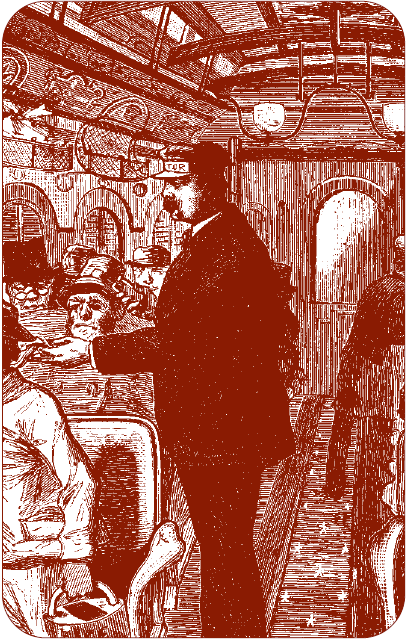 despite cuts in rail subsidies. Train miles have increased, and so have reliability and punctuality. As a result, both passenger trips and passenger miles increased by approximately 15 percent in the first two years. Freight traffic has increased even more than that.
despite cuts in rail subsidies. Train miles have increased, and so have reliability and punctuality. As a result, both passenger trips and passenger miles increased by approximately 15 percent in the first two years. Freight traffic has increased even more than that.
But there have been controversies over whether the government is getting good value for its money. Critics contend that the government either sold Railtrack for too little or has been too lax in regulating it, an argument that seems to be supported by the nearly fourfold increase in the price of Railtrack shares within two years of the initial public offering. Critics also complain that service quality has been uneven. In the first year, OPRAF assessed large fines on several passenger TOCs for not operating scheduled trains. In the second year, reliability improved but punctuality declined, although it was still above the levels of British Rail’s last year of operation. Some observers blame the decline on the increase in train frequency, which is causing some critical sections of track to operate too close to capacity.
The Benefits of Vertical Separation
One key benefit of vertical separation—added opportunities for competition—has been deliberately delayed. There was competition for TOC franchises when they were auctioned off, and vertical separation also offered the possibility of competition among them after the auctions. Some proved unavoidable where territories or routes overlapped; for example, where separate intercity, regional, and commuter TOCs all served the same corridor. But the government feared that, if TOCs were to invade each other’s territories from the outset, the uncertainties would discourage bidding for franchises. As a result, ORR decided not to allow passenger TOCs to establish any competing services until April 1, 1999.
A second benefit, already apparent, is managerial focus. British Rail was an enormous organization, so some of the smaller and more specialized of its businesses suffered from lack of attention. By creating separate companies for different activities, the restructuring focused managerial attention in a new way. This benefit seems most obvious with freight service, which had languished under British Rail. The turnaround in freight traffic would not have happened if freight TOCs were not single-mindedly concentrating on freight as their sole source of revenue. Many of the passenger TOCs are exhibiting similar energy in developing their businesses.
The Costs of Vertical Separation
The major disadvantage of vertical separation is increased difficulty in coordinating design and maintenance of infrastructure with train operating plans. Before restructuring, coordination was entirely within a single organization—British Rail—all of whose units were ostensibly dedicated to the common good of the enterprise and at least nominally under its central control. Now coordination has to take place through contracts negotiated at arm’s length by autonomous enterprises that have different and often conflicting objectives.
In theory, the track- and station-access charges set by ORR could provide strong incentives for Railtrack and the TOCs to coordinate their activities sensibly. Access charges for each TOC include two components: a variable charge per train-mile, intended to cover the cost of accommodating an additional train on the route, and a fixed annual charge, intended to recoup Railtrack’s fixed costs. In addition, a system of penalties provides incentives for day-to-day reliability and punctuality. Under the penalty scheme, a TOC must pay Railtrack a fine if one of its trains blocks a track or station at a time when it’s not scheduled to be there. Railtrack, in turn, must pay a fine to the TOC if it cannot provide  access for a train that’s on schedule. Penalties are not intended to generate substantial revenues for either the TOCs or Railtrack but simply to encourage reliable daily service. ORR reviews and revises the access charges every five years.
access for a train that’s on schedule. Penalties are not intended to generate substantial revenues for either the TOCs or Railtrack but simply to encourage reliable daily service. ORR reviews and revises the access charges every five years.
In practice, it has proved difficult to set access charges that provide incentives. In its first attempt, ORR set charges so that 90 percent of Railtrack’s revenue would come from the fixed component and only 10 percent from the variable component. This decision was based on an early and not very sophisticated study of Railtrack’s costs and assumed Railtrack tracks and stations were not operating close to their capacity. But the very small variable component of the access charge seems to have encouraged a substantial increase in train mileage, since it is relatively inexpensive for TOCs to run additional trains. In turn, this has caused excess capacity to disappear in many places. Worse, there is little incentive for Railtrack to invest in increased capacity if it can’t make much money on it.
ORR may change the fee structure in the future to approximate Railtrack’s current costs more closely. However, as long as ORR relies primarily on access charges to provide investment incentives, it has to establish a very complex system of charges that vary significantly by location, time of day, direction, speed, axle weights, traffic volumes, and other factors that affect Railtrack’s capacity costs.
In the absence of such a complex access-charge system, the main method of improving Railtrack’s capacity has been through negotiations between TOCs and Railtrack over specific investments the TOCs want. ORR must review any agreements between a TOC and Railtrack to be sure that Railtrack is not abusing its monopoly position in the negotiations.
The primary example of a negotiated agreement to date has been the West Coast Main Line (WCML), a key four-track route connecting London, Birmingham, Manchester, Liverpool, and Glasgow that is heavily used by intercity passenger, local commuter, and freight trains. Tight curves and an obsolete signal system on the one-hundred-year- old line limit its capacity.
Richard Branson, the founder of Virgin Airways, won the TOC franchise in 1996 for long-distance passenger service on the WCML. Branson’s bid was extremely aggressive, requesting subsidies of around £60 million per year in the beginning of the fifteen-year franchise but promising payments in excess of £200 million per year by the end. This financial turnaround could be achieved only if service were significantly improved.Branson’s company, Virgin Trains, immediately began negotiating with Railtrack for improvements to increase the planned maximum speed to 140 mph.
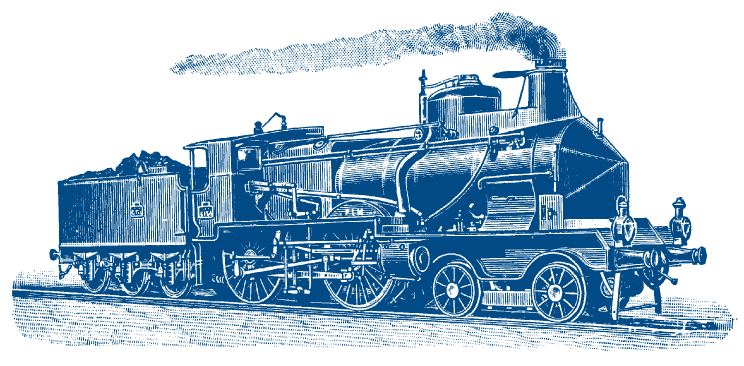
It took over two years of negotiations to sort out the financial responsibilities and competitive interests of the different parties involved in the WCML. Virgin’s proposal for 140-mph service created conflicts with other TOCs operating 80-mph commuter trains and 30-mph freight trains on the line. Operating 140-mph trains would reduce the capacity of the line unless Railtrack also upgraded to in-cab signaling and improved an extra pair of tracks. But these changes would provide benefits to the commuter and freight trains as well as to Virgin by increasing capacity and reducing delays at peak commuter hours. Railtrack, Virgin, and the other TOCs using the line had to agree both on how much the improvements would cost and on how the costs and risks would be shared among the several existing TOCs, potential new entrants, Railtrack, and the government.
The difficulties in reaching an agreement on the WCML suggest that this kind of negotiation may be a cumbersome method of coordinating infrastructure improvements with train-operating plans. The WCML is an extremely ambitious project, to be sure, but the complexities of negotiating agreements probably don’t decline much with the scale of a project. There are modest enhancement needs all over Railtrack’s network, and many may simply never get done if the high cost of negotiating agreements outweighs the benefits from the investments.
Conclusion
It is far too early to tell whether vertical separation will prove worthwhile in railroads. While the coordination problems seem daunting, the British have only begun to work on them. And the benefits of separation—in focus and added competition—are only just beginning to be realized. One thing that is sure is that many of us in the transportation research community will be following the British experiment with great interest.
Further Readings
Journal of Transport Economics and Policy, vol. 33, part 1 (January 1999): a special issue devoted to railway restructuring and reform in Europe.
European Conference of Ministers of Transport, The Separation of Operations from Infrastructure in the Provision of Railway Services (Paris: Organization for Economic Cooperation and Development, 1997).
Ron Kopicki and Louis S. Thompson, Best Methods of Railway Restructuring and Privatization, CFS paper series no. 111, Coordinating and Financial Advisory Services, Privatization Group (Washington, DC: World Bank, 1995).
Louis S. Thompson, “The Benefits of Separating Rail Infrastructure from Operations,” Policy Note, World Bank (1977).
José A. Gómez-Ibáñez, “Office of the Rail Regulator (Abridged),” Teaching Case, Case Program, Kennedy School of Government, Harvard University (1999).



